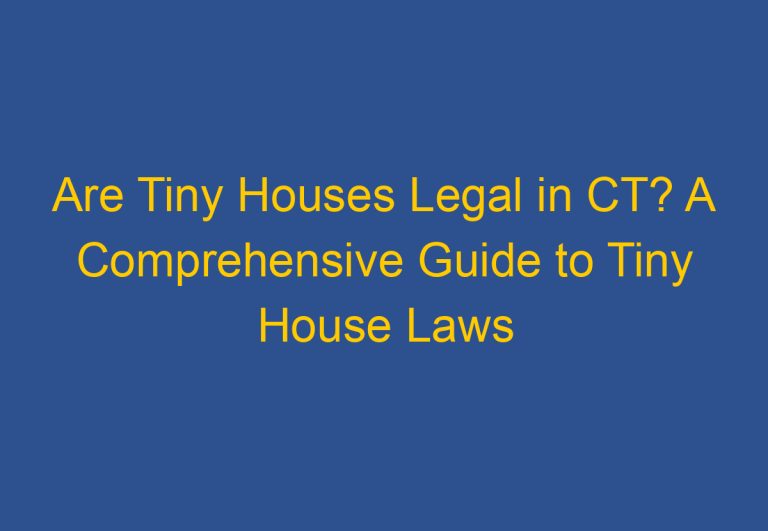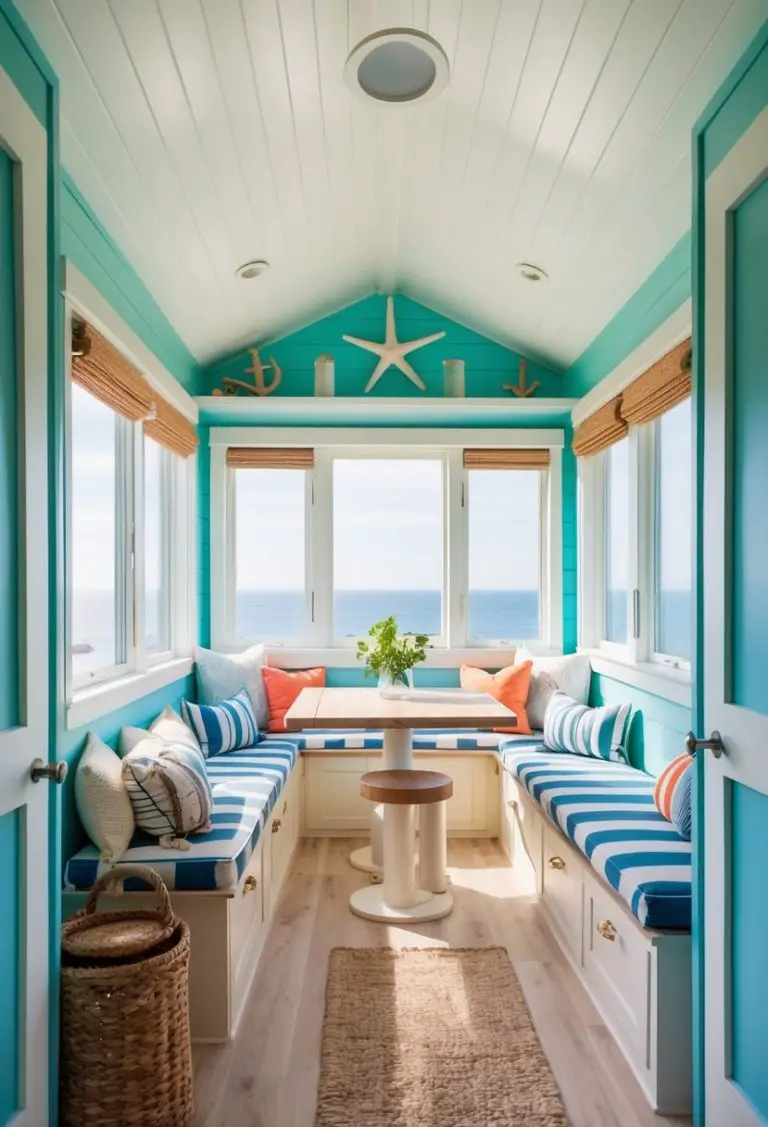Are Tiny Houses Safe? Exploring the Safety of Living in a Tiny House
Tiny houses have become increasingly popular in recent years as more people seek to downsize and simplify their lives. However, with their small size and unique construction, some people may wonder if tiny houses are safe to live in. This article will explore the safety of tiny houses and provide information on what makes them safe or unsafe.
One of the most common concerns about tiny houses is their structural integrity. Because they are smaller than traditional houses, some people may worry that they are not built to the same standards or may be more prone to collapse or damage in severe weather. However, tiny houses are typically built with the same durable materials as larger homes and must adhere to the same building codes and safety regulations. In fact, some builders may use high-quality materials and construction techniques to ensure that their tiny houses are even more durable and safe than traditional homes.
Another safety concern with tiny houses is fire safety. Because of their small size, tiny houses may be more susceptible to fires, and it can be difficult to escape in the event of a fire. However, many tiny house builders take fire safety seriously and incorporate fire-resistant materials and smoke detectors into their designs. Additionally, homeowners can take steps to minimize fire risks by using safe heating sources and avoiding overcrowding or clutter.
Design and Construction
When it comes to designing and constructing a tiny house, safety should always be a top priority. Proper design and construction are essential for ensuring that the tiny house is safe, comfortable, and secure. This section will explore some of the key considerations for designing and constructing a safe and sustainable tiny house.
Building Codes and Standards
Building codes and standards are critical for ensuring that the tiny house is constructed to a high standard of safety and quality. The International Building Codes (IBC) provide a set of guidelines for building construction and are widely used in the United States. Builders should consult the IBC and any other relevant local building codes and standards to ensure that their tiny house is built to code. Inspections and permits are also necessary to ensure that the tiny house meets all safety requirements.
Materials and Insulation
Using high-quality materials and insulation is essential for ensuring that the tiny house is safe, comfortable, and energy-efficient. Builders should use sustainable materials and construction techniques wherever possible to minimize the environmental impact of the tiny house. Insulation is also important for maintaining a comfortable temperature inside the tiny house and preventing moisture buildup.
Foundation and Structural Integrity
The foundation and structural integrity of the tiny house are critical for ensuring that it is safe and secure. Builders should use weight distribution techniques to ensure that the tiny house is properly balanced and stable. The foundation should also be designed to withstand any potential natural disasters, such as earthquakes or floods.
Ventilation and Air Quality
Proper ventilation and air quality are essential for maintaining a healthy and comfortable living environment inside the tiny house. Builders should ensure that the tiny house has adequate ventilation to prevent moisture buildup and improve indoor air quality. This can be achieved through the use of high-quality ventilation systems and air filters.
In conclusion, designing and constructing a safe and sustainable tiny house requires careful consideration of building codes and standards, materials and insulation, foundation and structural integrity, and ventilation and air quality. Builders should consult with experts and use high-quality materials and construction techniques to ensure that their tiny house is safe, comfortable, and secure.
Safety and Security Measures
Fire Safety and Prevention
One of the most critical safety concerns in a tiny house is fire safety. To prevent fires, it is essential to install smoke detectors in key areas and keep fire extinguishers accessible. Choose heating options that are safe for small spaces, and ensure proper fire protection on walls, floors, and ceilings. Additionally, implement fire prevention practices such as the correct storage of flammable materials.
Weatherproofing and Natural Disaster Preparedness
Tiny houses are more vulnerable to natural disasters such as tornadoes, hurricanes, heavy rain, earthquakes, and snowstorms. Therefore, it is necessary to take appropriate measures to protect the tiny house from such extreme weather conditions. Weatherproofing the tiny house with sealants and anchors is an effective way to prevent water damage and ensure stability during high winds. Anchoring the tiny house to the ground is also essential to prevent it from being carried away by strong winds.
Security Systems and Theft Prevention
Tiny houses are often targeted by burglars due to their small size and portability. Therefore, it is necessary to install a home security system to prevent theft. Security cameras, motion sensor lights, and a home security system can deter intruders and alert the owner in case of a break-in. Reinforcing doors and windows with bars, films, and locks can also provide additional security. It is also essential to have an emergency exit point in case of a break-in or other emergency situations.
In conclusion, safety and security measures are crucial in a tiny house to ensure the safety of the occupants and protect the house from natural disasters and theft. Adhering to safety regulations, installing smoke detectors and fire extinguishers, weatherproofing the tiny house, and installing a home security system are some of the measures that can be taken to ensure safety and security in a tiny house.
Frequently Asked Questions
How do tiny houses fare in extreme weather conditions?
Tiny houses are built to withstand various weather conditions, including extreme weather. However, it is important to note that the level of safety in a tiny house during extreme weather depends on the quality of the construction and the materials used. It is recommended to follow the safety regulations of your tiny house and take necessary steps to prevent any hazards.
What are the structural safety considerations for tiny homes?
Structural safety is a significant aspect to consider when building or living in a tiny home. It is essential to ensure that the structure is sturdy enough to withstand the weight of the materials used in the construction. Additionally, the foundation must be strong enough to support the weight of the house and prevent any potential accidents.
Are there any unique security concerns associated with tiny house living?
Like any other home, tiny houses are also susceptible to security issues. However, there are some unique security concerns associated with tiny house living, such as the compact size of the house and the limited space for storage. It is recommended to install security systems and take necessary precautions to ensure the safety of the occupants.
How does living in a tiny house impact personal safety and privacy?
Living in a tiny house can impact personal safety and privacy in several ways. The compact size of the house can make it difficult to find a private space, and the limited storage space can make it challenging to store important documents and valuables. It is recommended to take necessary precautions and install security systems to ensure the safety and privacy of the occupants.
What are the common safety challenges faced by families in tiny homes?
Families living in tiny homes face unique safety challenges, such as the limited space for children to play, the lack of privacy, and the potential hazards associated with cooking and heating in small spaces. It is recommended to follow safety regulations and take necessary precautions to ensure the safety of the occupants, especially children.
How do building codes and regulations affect the safety of tiny houses?
Building codes and regulations play a significant role in ensuring the safety of tiny houses. It is recommended to follow the safety regulations and building codes of your region to ensure that the construction of your tiny house is safe and meets the required standards.










